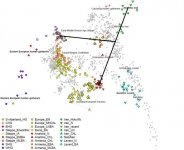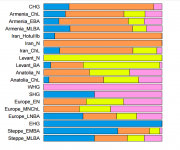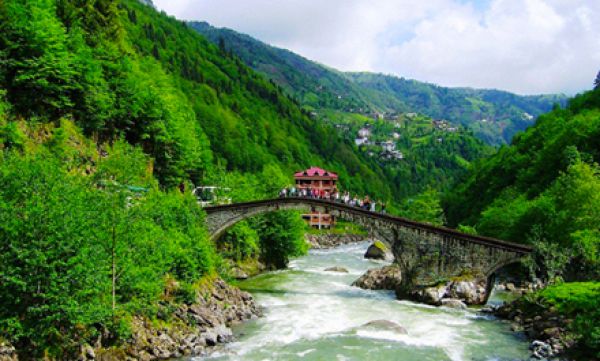Alan;482392]
The EHG admixture in Copper Age Iran equals that found in mesolithic CHG.
Well, not if we go by this chart, but the level of EHG in Armenia Copper Age is pretty close to that in CHG.*
View attachment 7815
Well, it decreases in the Early Bronze Age, but it increases to the highest levels in the Middle/Late Bronze Age, so by then, whatever was the case in previous eras, there might have been movement from north of the Caucasus.
I agree that it's complicated, and I don't see this as a simple matter of steppe intrusion. Part of the difficulty in interpreting what we see is that we don't have an Armenian Neolithic sample. The other problem, as Lazaridis pointed out in his post, is that we don't know the geographical range of these ancient people.
Let's assume, for the moment, that CHG resulted from the admixture of a population similar to the Iranian Neolithic who moved slightly north and encountered EHG. Did they encounter EHG already south of the Caucasus? Or were the EHC only north of the Caucasus, but the resulting admixed population straddled the entire Caucasus range. These are things we don't yet know and may perhaps never know.
That's why I don't know whether there's a hard and fast case to be made that the Armenian Copper and Early Bronze Age results necessarily imply a move from the steppes, although there is the R1b result to consider.
By the Armenian Chalcolithic we actually see, as you say and as I pointed out upthread, that EHG has decreased at the expense of an intrusion of Levant Neolithic and WHG. Is that actually just a breakdown of the Anatolian Neolithic that arrived from the west? Does that make more sense than a migration of purely Levant Neolithic people all the way north?
Then in the Armenia Early Bronze the EHG declines yet again, perhaps by admixture by a population heavier in Iranian Neolithic?
Only in the Armenia Late Bronze Age do we see the EHG levels rise back to the levels of the Iran Chalcolithic. That's the strongest case for steppe intrusion, in my opinion.
This is the confounding factor that might change all of this.








